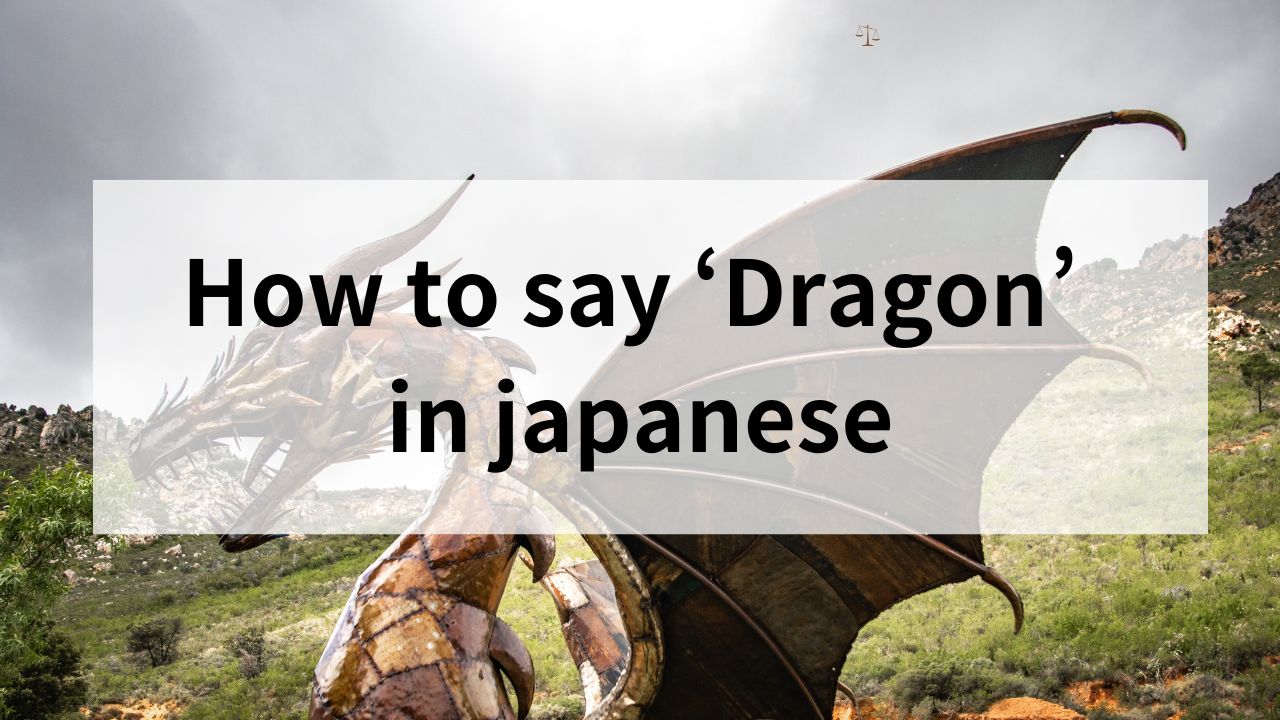Dragons are iconic creatures in Japanese culture and language, reflecting a blend of mythology, symbolism, and modern interpretations. This guide explores how to say “dragon” in Japanese, its cultural significance, and its appearances in modern applications.
How Do You Say “Dragon” in Japanese?
In Japanese, the word for “dragon” can be expressed in two primary ways: Ryuu (竜) and Tatsu (龍). Each has unique nuances and cultural contexts. Additionally, the English word “dragon” is commonly borrowed and used in specific contexts.
Ryuu (竜) and Tatsu (龍): The Two Words for Dragon
Ryuu and Tatsu both mean “dragon” but are used in slightly different ways depending on context and tone. Understanding the distinction helps in mastering their usage.
Ryuu (竜): Modern and Simplified Usage
Ryuu (竜) is the simplified and more modern form of “dragon.” It is commonly seen in everyday contexts such as names, modern literature, and media. Examples include:
- 青竜 (Seiryu): The Azure Dragon, one of the Four Symbols in East Asian mythology.
- 竜巻 (Tatsumaki): A tornado, literally “dragon roll.”
Tatsu (龍): Traditional and Cultural Context
Tatsu (龍) represents the traditional and historic image of a dragon in Japan. It is often associated with folklore, rituals, and older texts. Examples include:
- 八岐大蛇 (Yamata no Orochi): The mythical eight-headed dragon defeated by the god Susanoo.
- 龍神 (Ryuujin): A dragon deity associated with water and rain.
“Dragon” as a Borrowed Word in Japanese
The English word “dragon” is also used in Japanese as ドラゴン (Doragon), especially in modern and globalized contexts. This term often refers to fantastical or Western-style dragons in media, games, and branding.
Cultural and Symbolic Meaning of Dragons in Japan
Dragons in Japanese culture symbolize power, divinity, and natural harmony. They are deeply respected as benevolent beings that govern water and weather.
Dragons as Symbols of Power and Divinity
Dragons in Japan are revered as powerful and divine creatures. They often appear in Shinto and Buddhist traditions, where they are considered protectors of water and nature. Temples and shrines frequently feature dragon motifs, emphasizing their sacred nature.
Mythological Dragons in Japanese Folklore
Japanese mythology is rich with dragon stories. Notable examples include:
- 八岐大蛇 (Yamata no Orochi): An eight-headed dragon defeated by the god Susanoo.
- 竜宮城 (Ryugu-jo): The undersea dragon palace in the tale of Urashima Taro.
Dragons in Japanese Festivals and Traditions
Dragons are celebrated in various Japanese festivals, such as Nagasaki Kunchi, where dragon dances are performed. Traditional art and crafts, including ceramics and textiles, also frequently depict dragons.
Practical Applications of “Dragon” in Japanese
Dragons appear in everyday language, media, and cultural contexts in Japan. Learning these applications can enrich your understanding and use of the term “dragon.”
Talking About Dragons in Modern Japanese
In modern Japanese, dragons are referenced in various ways, such as describing characteristics of strength or mystery. For instance:
- 竜の道 (Ryu no michi): “The way of the dragon,” symbolizing a strong and disciplined path.
- ドラゴン型 (Doragon-gata): “Dragon type,” used metaphorically in games or storytelling.
Common Phrases and Expressions with Dragons
Dragon-related expressions often convey strength, majesty, or enigma. Examples include:
- 竜頭蛇尾 (Ryuto dabi): “A dragon’s head and a snake’s tail,” describing something that starts strong but ends weakly.
- 竜巻を起こす (Tatsumaki o okosu): “To create a tornado,” symbolizing powerful action.
Dragon-Related Names in Japanese
Dragons inspire many names in Japanese culture, both for people and places. Examples include:
- 竜司 (Ryuji): A common male name meaning “dragon child.”
- 竜ケ崎 (Ryugasaki): A city name meaning “dragon cape.”
Dragons in Japanese Anime and Manga
Dragons are central themes in many Japanese anime and manga. Examples include:
- モンスターハンター (Monster Hunter): A globally popular video game series where players hunt and interact with various dragon-like creatures.
- ポケモン (Pokemon): Features dragon-type Pokemon like Dragonite (カイリュー), which embody the mystique and power of dragons in a modern context.
- ドラゴンドライブ (Dragon Drive): A manga and anime series centered on dragon battles and the bond between humans and dragons.
These examples highlight the versatile role of dragons in Japanese media, often symbolizing strength, wisdom, or mystery, while adapting to various storytelling genres.
FAQs
Here are some common questions and answers about dragons in Japanese culture, addressing both linguistic and cultural aspects.
Are Japanese Dragons Different from Western Dragons?
Yes, Japanese dragons differ significantly from their Western counterparts. In Japan, dragons are typically benevolent, water-related creatures associated with power and divinity. In contrast, Western dragons are often portrayed as fire-breathing adversaries with wings and a more destructive nature.
Can I Use “Dragon” in English When Talking to Japanese People?
Yes, the English word “dragon” (ドラゴン) is widely understood in Japan, especially in contexts related to modern media, games, or branding. However, using the Japanese terms “Ryuu” (竜) or “Tatsu” (龍) in appropriate contexts can demonstrate cultural awareness and linguistic effort.
Conclusion
Dragons in Japanese culture offer a fascinating window into the nation’s mythology, symbolism, and modern adaptations. They bridge the ancient and the contemporary, reflecting both reverence for nature and creative storytelling.
By understanding terms like “Ryuu” (竜) and “Tatsu” (龍), exploring dragon-related folklore, and recognizing their role in Japanese media, you can deepen your appreciation for this iconic figure. Whether you’re discussing mythology or enjoying anime, dragons provide a unique cultural perspective that enriches any exploration of Japan.








